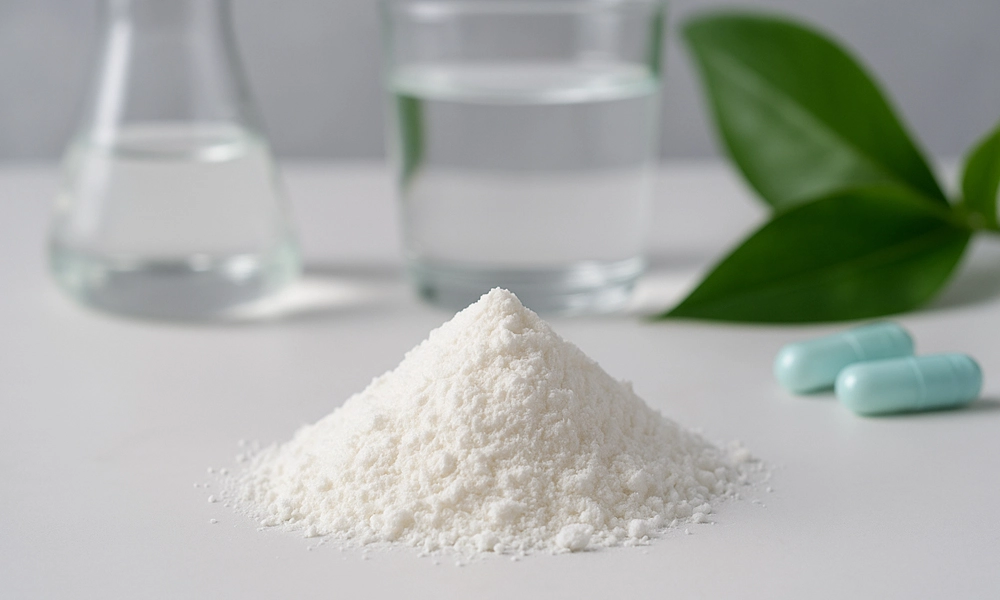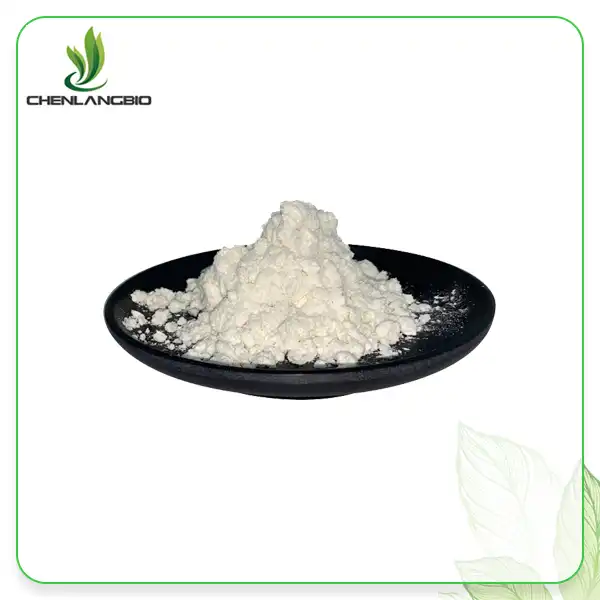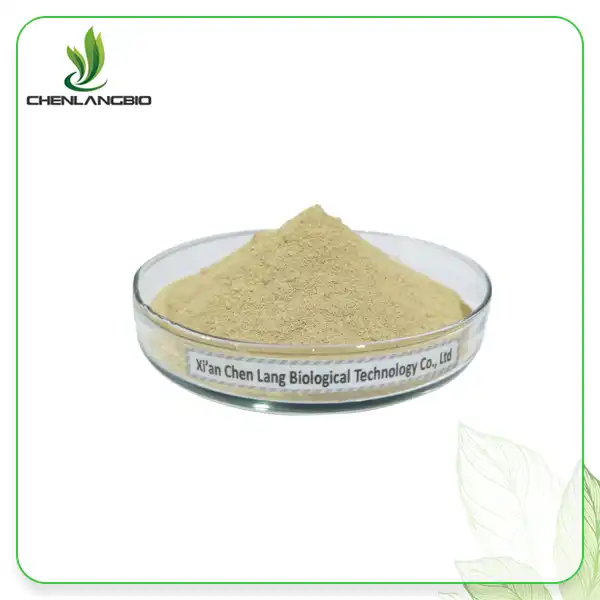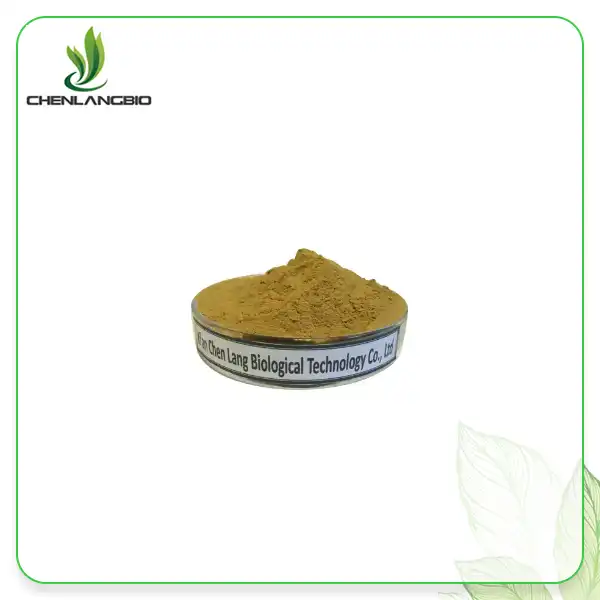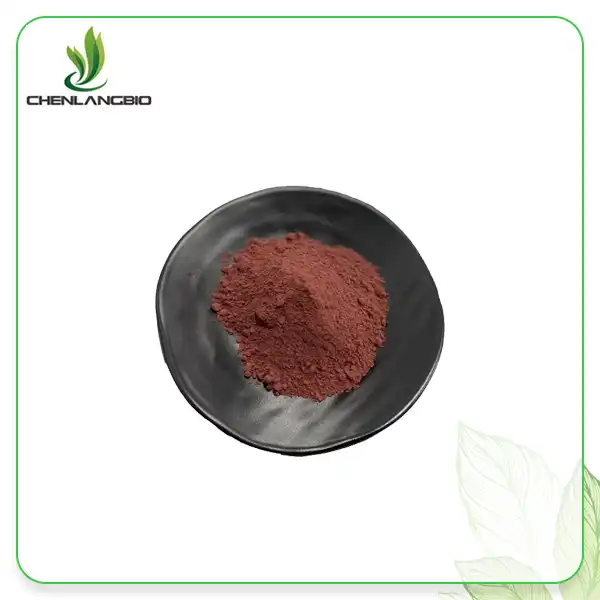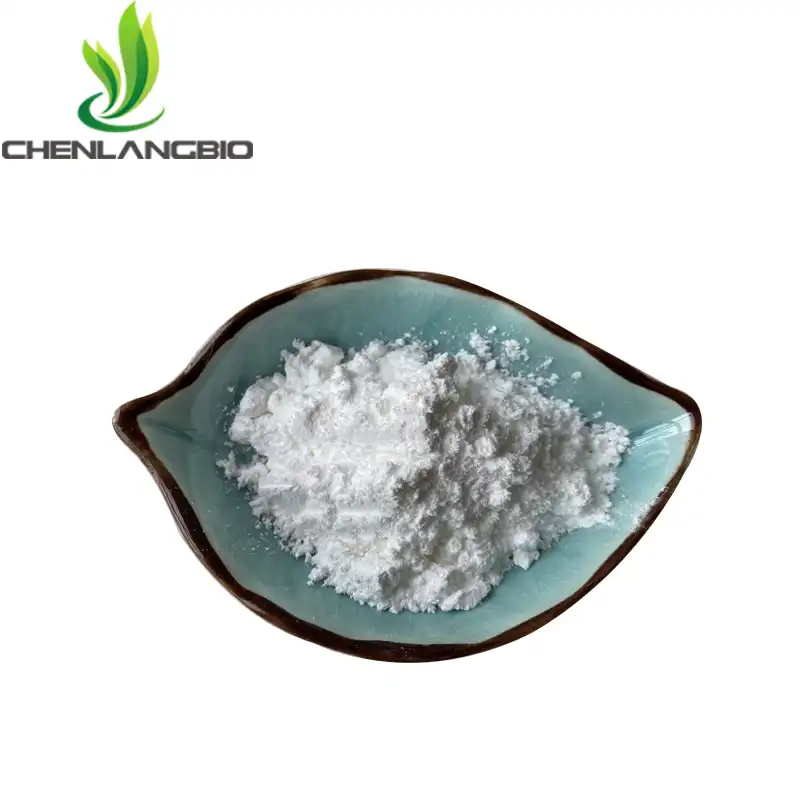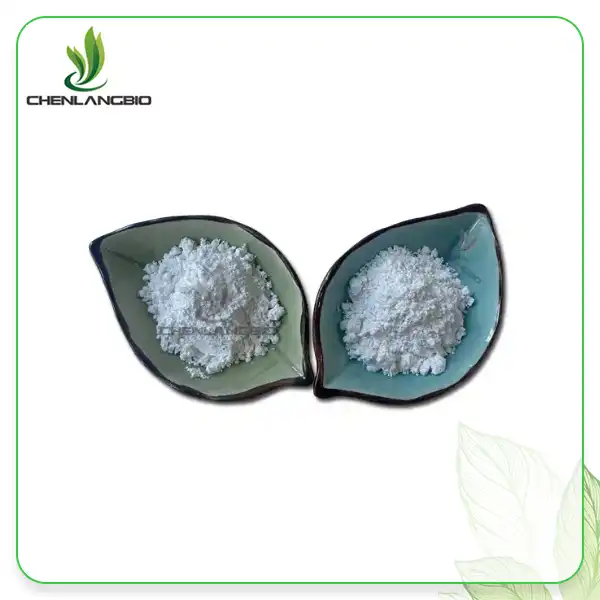What's the Difference Between Vitamin B6 and P5P?
2025-11-21 14:33:24
Vitamin B6 plays an essential role in human metabolism, influencing neurotransmitter synthesis, amino acid conversion, energy production, and hormone balance. But not all forms of vitamin B6 work the same way. The two forms most commonly used in supplements—pyridoxine (vitamin B6) and pyridoxal-5-phosphate (P5P)—differ significantly in their bioavailability, metabolic requirements, and clinical impact.
For formulators, nutrition brands, and health professionals, understanding the differences between B6 and P5P is crucial for choosing the right ingredient. CHEN LANG BIO TECH provides a comprehensive, research-backed comparison to help you determine which form best fits your formulation or wellness needs.
What Is Vitamin B6 (Pyridoxine)?
Vitamin B6 is a water-soluble nutrient found naturally in poultry, fish, whole grains, and legumes. In supplements, it most commonly appears as pyridoxine hydrochloride, a stable synthetic form widely used in multivitamins. However, pyridoxine is not biologically active.
Once consumed, it must undergo a multi-step process in the liver to become P5P, the active coenzyme form.
Key metabolic steps include:
•Phosphorylation
•Oxidation by pyridoxine-5’-phosphate oxidase (PNPO)
•Dependence on magnesium and adequate liver function
For healthy individuals, this conversion usually functions adequately. But for people with:
•High stress
•Liver dysfunction
•Chronic inflammation
•Genetic variants in the PNPO gene
•Nutrient deficiencies (e.g., magnesium)
the conversion may be inefficient, resulting in functional B6 deficiency even when intake is sufficient.
What Is P5P (Pyridoxal-5-Phosphate)?
Pyridoxal-5-phosphate (P5P) is the biologically active form of vitamin B6. Unlike pyridoxine, P5P does not require liver conversion. Once absorbed, it directly enters metabolic pathways and participates in more than 140 enzymatic reactions.
P5P is particularly important for:
•Neurotransmitter production (serotonin, dopamine, GABA)
•Amino acid metabolism
•Hemoglobin formation
•Glycogen breakdown
•Methylation and homocysteine regulation
•Hormone balance and steroid metabolism
Because P5P bypasses potential metabolic bottlenecks, it offers greater efficiency and more predictable effects.
How the Body Processes Vitamin B6 vs. P5P
Vitamin B6 Conversion Pathway
To become usable, pyridoxine must convert to P5P through the liver. This conversion depends on:
•PNPO enzyme activity
•Adequate magnesium
•Healthy liver detoxification pathways
If any of these factors are impaired, pyridoxine may accumulate while P5P remains low. This is why some individuals experience minimal benefits from regular vitamin B6 supplements.
P5P Utilization
P5P enters directly into:
•Neurotransmitter synthesis
•Glucose metabolism
•Red blood cell formation
•Hormone metabolism
Because no conversion is required, P5P is especially beneficial for people with compromised metabolism or high nutrient demands.
Key Functional Differences Between Vitamin B6 and P5P
1. Bioavailability
Vitamin B6: Requires conversion; efficiency varies significantly among individuals.
P5P: Fully active; more reliable absorption and metabolic function.
2. Neurological Support
Because P5P participates directly in neurotransmitter synthesis, it is generally more effective for:
•Mood stability
•Stress resilience
•Sleep support
•Cognitive clarity
Clinical studies frequently show stronger neurological effects from P5P compared to pyridoxine.
3. Hormonal and Methylation Function
P5P plays a central role in:
•Estrogen detoxification
•Progesterone balance
•Homocysteine reduction (with B12 + folate)
Pyridoxine provides indirect support but may be less reliable in individuals with conversion issues.
4. Safety and Tolerability
High-dose pyridoxine (200 mg+ daily, long term) has been associated with:
•Peripheral neuropathy
•Sensory disturbances
•P5P, by contrast, has not been shown to cause the same neurotoxicity at equivalent effective doses. Its safety profile is considered superior for long-term use.
Comparison Table: Vitamin B6 vs. P5P
|
Attribute |
Vitamin B6 (Pyridoxine) |
P5P (Active Vitamin B6) |
|
Biological activity |
Requires conversion |
Immediately active |
|
Absorption |
Variable |
Predictable |
|
Conversion dependence |
Liver + PNPO enzyme |
None |
|
Neurological effects |
Moderate |
Strong |
|
Hormone/metabolic support |
Moderate |
Strong |
|
Risk at high doses |
Higher (neuropathy risk) |
Lower |
|
Preferred in formulations |
Basic multivitamins |
Advanced, high-performance formulas |
Who Should Consider P5P Over Vitamin B6?
Research and clinical experience suggest P5P may be the better choice for:
•Individuals with chronic stress or sleep issues
•PMS-related mood fluctuations
•High homocysteine levels
•Liver burden or weakened detox pathways
•People with PNPO or methylation-related gene variants
•Consumers using high-performance or therapeutic supplements
•Athletes needing efficient neurotransmitter and energy metabolism support
•P5P offers consistent results even when metabolic conversion is limited.
Applications in Supplement & Functional Beverage Formulation
P5Ppowder is widely used in:
•Mood support formulas
•Enhances serotonin and GABA pathways.
•Stress & adrenal blends
•Often paired with magnesium, ashwagandha, or L-theanine.
•Women’s health / PMS formulas
•Supports hormonal balance and neurotransmitter production.
•Cardiovascular health
•Works with folate and B12 to modulate homocysteine.
•Sleep support
•Supports melatonin synthesis via serotonin pathways.
•Sports nutrition
•Improves energy metabolism and neuromuscular efficiency.
•Functional drinks & RTDs
•Highly soluble and stable for beverage applications.
P5P (Pyridoxal-5-Phosphate) Recommended Dosage
1. General Wellness & Daily Nutritional Support
Typical dose: 10–20 mg per day
This range works well for most healthy adults who want to support basic neurological, metabolic, and immune function. It is also suitable for individuals who already consume a multivitamin but want a more efficient form of vitamin B6.
2. Mood, Stress, and Sleep Support
Typical dose: 20–40 mg per day
This dosage is frequently used in formulas designed to support emotional balance, stress resilience, and sleep quality. P5P directly supports the synthesis of serotonin, dopamine, and GABA—three neurotransmitters that strongly influence mood and relaxation.
People who experience high stress, irregular sleep, or occasional anxiety often respond better to P5P than to standard pyridoxine.
3. Hormonal Balance & Women’s Health
Typical dose: 25–50 mg per day
P5P plays a key role in estrogen metabolism and progesterone balance. For this reason, it is commonly used in PMS-support formulas and women’s health blends. Consumers who experience cyclical mood changes, bloating, or tension during their menstrual cycle may benefit from this range.
4. Homocysteine Regulation (with Folate and B12)
Typical dose: 30–50 mg per day
P5P works synergistically with methylated folate and vitamin B12 to support methylation processes and maintain healthy homocysteine levels. Individuals with slightly elevated homocysteine, cardiovascular risk factors, or MTHFR-related concerns may benefit from this combination.
5. High-Demand Individuals: Athletes, Shift Workers, and Stress-Loaded Lifestyles
Typical dose: 40–75 mg per day
Athletes and individuals exposed to chronic physical or cognitive strain may require higher levels of active B6 to maintain neurotransmitter balance and energy metabolism. These doses are often used in advanced sports nutrition or adrenal-support formulations. Professional guidance is recommended for the upper range.
6. Formulation Applications (OEM/ODM Guidance)
Functional Beverages / RTDs
•5–15 mg per serving
•P5P dissolves well and remains stable in liquid formats, making it suitable for ready-to-drink products.
Capsules and Tablets
•15–50 mg per serving
•Ideal for mood support, adrenal blends, women’s health formulas, and high-performance B-complex products.
•High-End or Targeted Therapeutic Formulas
•50–75 mg per serving
•Often used in neurological, hormonal, or cardiovascular formulations that require a higher active B6 load.
Summary: When to Choose P5P Over Vitamin B6
|
Purpose |
Recommended Form |
Dosage Range |
|
Daily nutrition |
Vitamin B6 or P5P |
10–25 mg |
|
Mood & stress support |
P5P |
20–40 mg |
|
PMS / women’s health |
P5P |
25–50 mg |
|
Homocysteine regulation |
P5P + B12 + Folate |
30–50 mg |
|
Athletes / high stress |
P5P |
40–75 mg |
|
Cost-efficient formulas |
Vitamin B6 |
20–50 mg |
|
High-efficiency formulas |
P5P |
20–50 mg |
Safety Considerations about P5P and Vitamin B6
Both pyridoxine (vitamin B6) and pyridoxal-5-phosphate (P5P) are generally safe when used within clinically established ranges; however, their safety profiles differ due to variations in metabolic handling and tolerability.
Pyridoxine (Vitamin B6):
While pyridoxine is widely used and well tolerated at standard nutritional doses, long-term exposure to high doses—typically above 200 mg/day—has been associated with sensory neuropathy in susceptible individuals. This neurotoxic effect is believed to stem from the accumulation of unconverted pyridoxine, which may interfere with neuronal signaling. For this reason, pyridoxine is not recommended at high therapeutic doses unless closely monitored by a healthcare professional.
Additionally, individuals taking medications that alter B6 metabolism—such as isoniazid, hydralazine, some anticonvulsants, or oral contraceptives—may require adjusted dosing due to altered pyridoxine utilization.
P5P (Pyridoxal-5-Phosphate):
P5P demonstrates a favorable safety profile, largely because it bypasses hepatic activation and does not accumulate in its unmetabolized form. Clinical data and practitioner experience indicate that P5P is well tolerated at functional doses up to 50–75 mg/day, with a markedly lower risk of neuropathic symptoms compared with high-dose pyridoxine. This makes P5P the preferred option for long-term, targeted applications, especially in neurological, hormonal, and methylation-focused formulations.
However, individuals taking medications that influence B6-dependent enzymatic pathways—particularly certain anti-epileptic drugs—should use P5P under physician supervision, as alterations in neurotransmitter synthesis may modify pharmacodynamic responses.
General Precautions:
•Pregnant or breastfeeding individuals should follow professional dosing guidelines.
•Those with severe liver impairment may benefit more from P5P due to reduced conversion capacity.
•Consumers with known PNPO gene variations or methylation impairments typically respond better to P5P.
•As with all B-complex nutrients, P5P and pyridoxine should be used within balanced formulas unless a targeted clinical need is identified.
Overall, when used responsibly and within evidence-based ranges, both forms of vitamin B6 are considered safe. P5P, however, offers greater metabolic predictability and a reduced risk of adverse neurological effects, making it the preferred choice in advanced formulations.
FAQ
Is P5P better absorbed than vitamin B6?
Yes. P5P is already in its active form and bypasses the conversion required by pyridoxine.
Can P5P help with stress or mood?
Yes. It directly supports neurotransmitters involved in emotional stability and stress resilience.
Why does vitamin B6 sometimes cause side effects?
High doses of pyridoxine can accumulate unmetabolized and potentially cause nerve irritation.
Is P5P safe for daily use?
Yes. Most individuals tolerate 10–50 mg well.
Do athletes benefit more from P5P?
Yes. It supports neurotransmitter function and energy metabolism, making it effective in sports nutrition.
Conclusion
Vitamin B6 (pyridoxine) and P5P serve overlapping yet distinctly different roles in human health. While pyridoxine is commonly used and cost-effective, its reliance on metabolic conversion can limit its effectiveness. P5P, as the active coenzyme form, offers superior absorption, greater metabolic reliability, stronger neurological benefits, and a safer long-term profile.
For advanced supplement formulations, functional beverages, and precision nutrition applications, P5P powder is the preferred choice due to its consistency and clinical relevance. Please contact us email: admin@chenlangbio.com for more information about P5P powder.
References
Dakshinamurti K. Vitamin B6: Its Role in Cell Biology and Function. Nutrition Research. 2008;28(9):416–425.
Merrill AH, Henderson JM. Diseases Associated with Defects in Vitamin B6 Metabolism or Utilization. Annu Rev Nutr. 1987;7:137–156.
Hellmann H, Mooney S. Vitamin B6: A Molecule for Human Health? Microbiol Mol Biol Rev. 2010;74(2):128–150.
Leklem JE. Vitamin B6. J Am Diet Assoc. 1990;90(2):169–173.
Parra M, Stahl S, Hellmann H. Vitamin B6 and Its Role in Cell Metabolism and Physiology. Cells. 2018;7(7):84.
Clayton PT. B6-Dependent Epilepsies. Epilepsy Res. 2006;70(Suppl 1):S21–S29.
Chiang EP, Shane B, Stover PJ. Folate and P5P Interactions in One-Carbon Metabolism. J Nutr Biochem. 1996;7(7):322–329.
Leklem JE, Hollenbeck CB. Vitamin B6 and Hormonal Regulation. Ann N Y Acad Sci. 1990;585:193–199.
Reynolds EH. Folic Acid, Vitamin B12 and Vitamin B6 in Mood Disorders. Lancet Psychiatry. 2002;359(9304):1917–1922.
Dempsey JL, Pfeiffer CM. Measurement of Vitamin B6 and Its Active Coenzyme Pyridoxal 5′-Phosphate in Clinical Studies. Clin Chim Acta. 2010;411(17–18):1297–1303.
Bender DA. Vitamin B6 Requirements and Metabolism in Health and Disease. Nutr Health. 1994;10(4):247–256.
Lotto V, Choi SW, Friso S. Vitamin B6: A Challenging Link between Nutrition and Inflammation. J Nutr. 2011;141(4):12365–12415.

